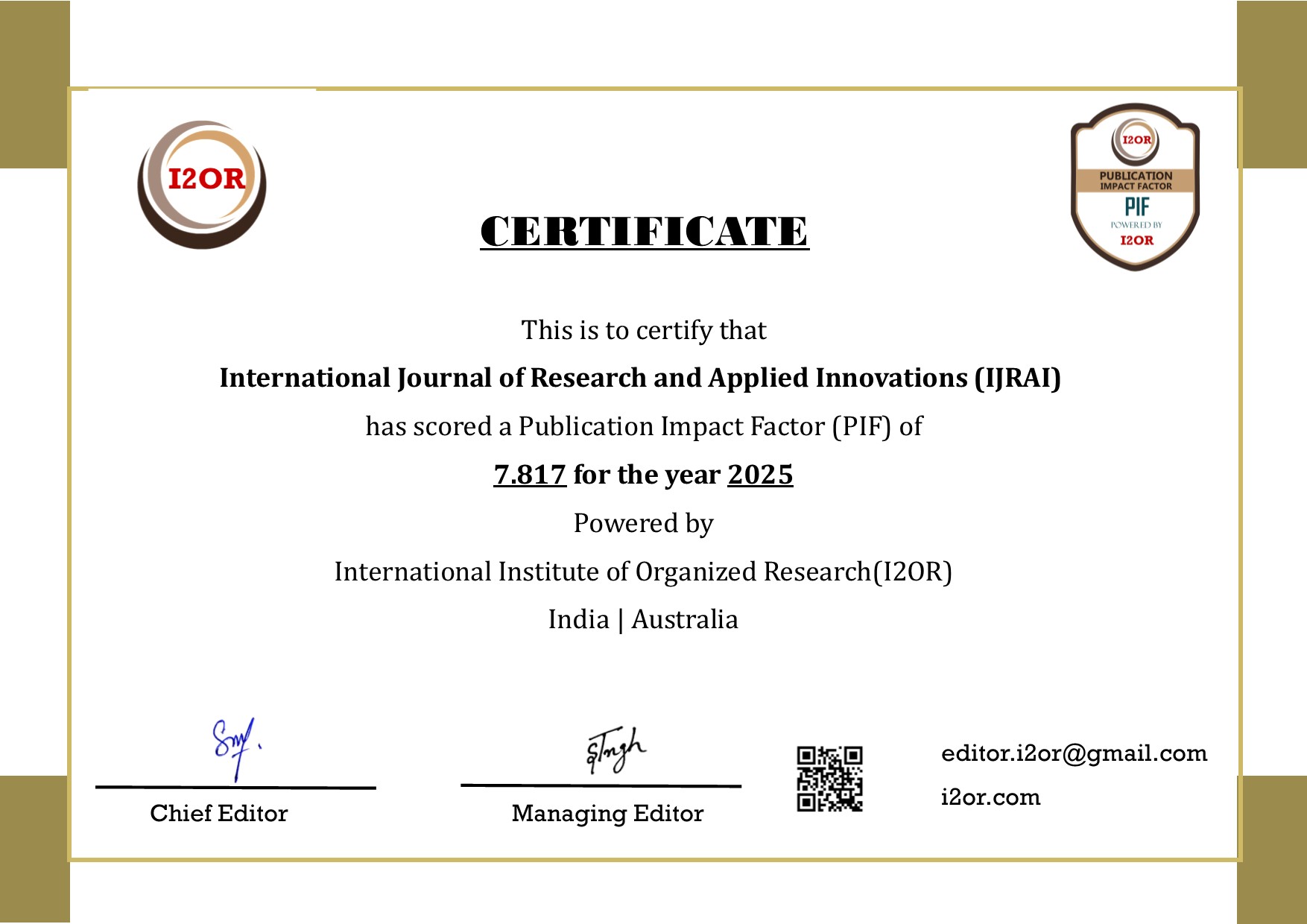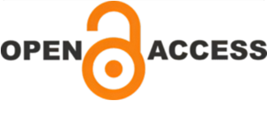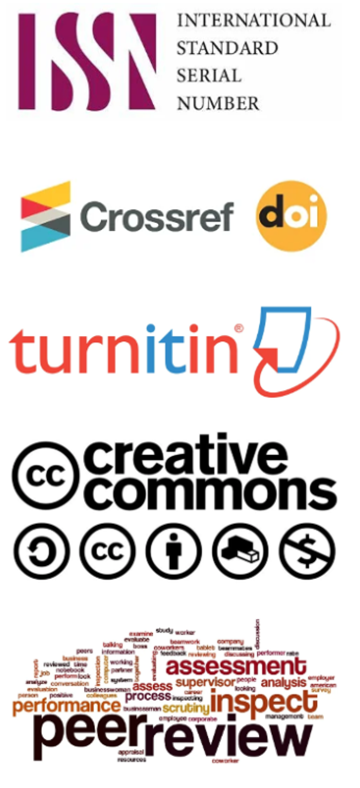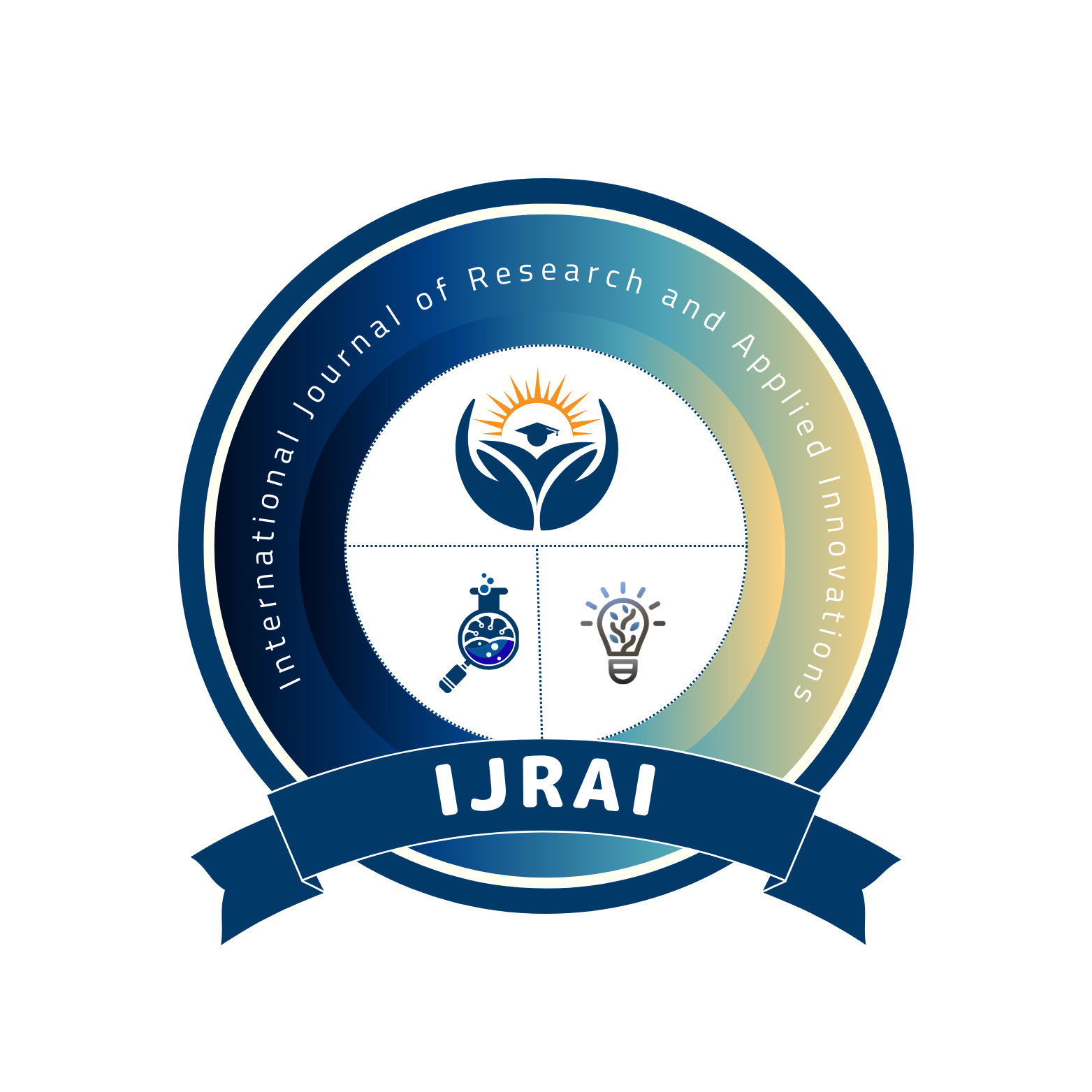Proactive Failover and Automation Frameworks for Mission-Critical Workloads: Lessons from Manufacturing Industry
DOI:
https://doi.org/10.15662/IJRAI.2023.0601004Keywords:
Proactive Failover, Mission-Critical Workloads, Industrial Automation Resilience, Manufacturing IT Continuity, Predictive Recovery Frameworks, Edge-Orchestrated High Availability, Autonomous Infrastructure ManagementAbstract
In the contemporary manufacturing sector where the production systems are running under constant demand and the global supply chain is based on real-time synchronization, even temporary lack of the functioning can lead to the serious loss of money, safety concerns, and decrease in productivity. In a bid to support mission-critical services like ERP (Enterprise Resource Planning), MES (Manufacturing Execution Systems), and SCADA (Supervisory Control and Data Acquisition), manufacturers are starting to use proactive failover and automation systems that extend beyond disaster recovery. This paper discusses the effect of predictive orchestration and automation-based resilience on the design of industrial IT systems to guarantee uninterrupted workflow of important processes.
The suggested structure combines real-time monitoring, automatic failover process coordination, and predictive analytics to identify abnormalities and initiate recovery measures before it fails. In comparison to the conventional failover plans, which react after a failure, proactive failover implements use machine learning knowledge, sensor information, and edge computing to predict possible system degradation. This will reduce the Mean Time to Recovery (MTTR), minimize production downtimes and protect the integrity of data over distributed industrial networks.
Using the lessons learned in the manufacturing industry, the paper establishes success factors in implementing automation-based continuity frameworks, including modular architecture design, multi-layered failover integration, and adaptive governance controls based on international standards, such as ISO 22301 and IEC 62443. The results indicate that active failovers not only positively affect technical reliability and operational agility but also bring quantifiable business benefits, such as reduced maintenance expenses, enhanced compliance, and long-lasting customer trust. Finally, this paper places proactive failover as a strategic foundation of Industry 4.0 resilience, reconsidering manufacturing continuity as a proactive prevention approach rather than a reactive recovery strategy and an intelligent automation.
References
1. Ambrogio, G., Filice, L., Longo, F., & Padovano, A. (2022). Workforce and supply chain disruption as a digital and technological innovation opportunity for resilient manufacturing systems in the COVID-19 pandemic. Computers and Industrial Engineering, 169. https://doi.org/10.1016/j.cie.2022.108158
2. Chen, H. C., Li, X., Frank, M., Qin, X., Xu, W., Cebrian, M., & Rahwan, I. (2022). Automation impacts on China’s polarized job market. Journal of Computational Social Science, 5(1), 517–535. https://doi.org/10.1007/s42001-021-00134-8
3. Elorrieta-Sanz, B., & Olcina-Cantos, J. (2021). Green infrastructure and spatial planning in Spain. Ciudad y Territorio Estudios Territoriales, 53(207), 23–46. https://doi.org/10.37230/CyTET.2021.207.02
4. González, I., Calderón, A. J., & Portalo, J. M. (2021). Innovative multi-layered architecture for heterogeneous automation and monitoring systems: Application case of a photovoltaic smart microgrid. Sustainability (Switzerland), 13(4), 1–24. https://doi.org/10.3390/su13042234
5. González, S. G., Dormido Canto, S., & Sánchez Moreno, J. (2020, June 1). Obtaining high preventive and resilience capacities in critical infrastructure by industrial automation cells. International Journal of Critical Infrastructure Protection. Elsevier B.V. https://doi.org/10.1016/j.ijcip.2020.100355
6. Ganesan, S., & Subramani, D. (2021). Spatio-temporal predictive modeling framework for infectious disease spread. Scientific Reports, 11(1). https://doi.org/10.1038/s41598-021-86084-7
7. Gonnerman, M., Linden, D. W., Shea, S. A., Sullivan, K., Kamath, P., & Blomberg, E. (2022). Including a spatial predictive process in band recovery models improves inference for Lincoln estimates of animal abundance. Ecology and Evolution, 12(10). https://doi.org/10.1002/ece3.9444
8. Huang, H., & Guo, S. (2019). Proactive Failure Recovery for NFV in Distributed Edge Computing. IEEE Communications Magazine, 57(5), 131–137. https://doi.org/10.1109/MCOM.2019.1701366
9. Isolani, P. H., Kulenkamp, D. J., Marquez-Barja, J. M., Granville, L. Z., Latré, S., & Syrotiuk, V. R. (2021). Support for 5g mission-critical applications in software-defined ieee 802.11 networks. Sensors (Switzerland), 21(3), 1–36. https://doi.org/10.3390/s21030693
10. Jeong, S. J., Lee, H. J., & Lee, B. S. (2021). Effect of electron beam continuity on microstructures and mechanical properties of titanium lattice structures produced with electron beam additive manufacturing. Materials and Design, 207. https://doi.org/10.1016/j.matdes.2021.109822
11. Kateja, N., Tiwari, A., Thakur, G., & Rathore, A. S. (2021). Complete or periodic continuity in continuous manufacturing platforms for production of monoclonal antibodies? Biotechnology Journal, 16(7). https://doi.org/10.1002/biot.202000524
12. Kaeo-Tad, N., Jeenanunta, C., Chumnumporn, K., Nitisahakul, T., & Sanprasert, V. (2021). Resilient manufacturing: Case studies in Thai automotive industries during the COVID-19 pandemic. Engineering Management in Production and Services, 13(3), 99–113. https://doi.org/10.2478/emj-2021-0024
13. Kuhn, M., & Franke, J. (2021). Data continuity and traceability in complex manufacturing systems: a graph-based modeling approach. International Journal of Computer Integrated Manufacturing, 34(5), 549–566. https://doi.org/10.1080/0951192X.2021.1901320
14. Kosieradzka, A., Smagowicz, J., & Szwed, C. (2022). Ensuring the business continuity of production companies in conditions of COVID-19 pandemic in Poland – Applied measures analysis. International Journal of Disaster Risk Reduction, 72. https://doi.org/10.1016/j.ijdrr.2022.102863
15. Pasumarthi, Arunkumar. (2022). International Journal of Research and Applied Innovations (IJRAI) Architecting Resilient SAP Hana Systems: A Framework for Implementation, Performance Optimization, and Lifecycle Maintenance. International Journal of Research and Applied Innovations. 05. 10.15662/IJRAI.2022.0506007.
16. Li, J., Maiti, A., Springer, M., & Gray, T. (2020). Blockchain for supply chain quality management: challenges and opportunities in context of open manufacturing and industrial internet of things. International Journal of Computer Integrated Manufacturing, 33(12), 1321–1355. https://doi.org/10.1080/0951192X.2020.1815853
17. Li, Y., & Liu, Q. (2020). Intersection management for autonomous vehicles with vehicle-to-infrastructure communication. PLoS ONE, 15(7). https://doi.org/10.1371/journal.pone.0235644
18. Matsuyama, L., Zimmerman, R., Eaton, C., Weger, K., Mesmer, B., Tenhundfeld, N., … Semmens, R. (2021). Determinants that are believed to influence the acceptance and adoption of mission critical autonomous systems. In AIAA Scitech 2021 Forum (pp. 1–12). American Institute of Aeronautics and Astronautics Inc, AIAA. https://doi.org/10.2514/6.2021-1156
19. Naghshineh, B., & Carvalho, H. (2022, May 1). The implications of additive manufacturing technology adoption for supply chain resilience: A systematic search and review. International Journal of Production Economics. Elsevier B.V. https://doi.org/10.1016/j.ijpe.2021.108387
20. Pakrijauskas, K., & Mazeika, D. (2021). On Recent Advances on Stateful Orchestrated Container Reliability. In 2021 IEEE Open Conference of Electrical, Electronic and Information Sciences, eStream 2021 - Proceedings. Institute of Electrical and Electronics Engineers Inc. https://doi.org/10.1109/eStream53087.2021.9431489
21. Singhal, K., & Singhal, J. (2022). Technology, knowledge, and manufacturing before the Industrial Revolution. Production and Operations Management, 31(12), 4262–4275. https://doi.org/10.1111/poms.13855
22. Tschannen, D., & Anderson, C. (2020). The pressure injury predictive model: A framework for hospital-acquired pressure injuries. Journal of Clinical Nursing, 29(7–8), 1398–1421. https://doi.org/10.1111/jocn.15171
23. Wuthishuwong, C., Traechtler, A., & Bruns, T. (2015). Safe trajectory planning for autonomous intersection management by using vehicle to infrastructure communication. Eurasip Journal on Wireless Communications and Networking, 2015(1), 1–12. https://doi.org/10.1186/s13638-015-0243-3
24. Xia, L., Ma, G., Wang, F., Bai, G., Xie, Y. M., Xu, W., & Xiao, J. (2022). Globally continuous hybrid path for extrusion-based additive manufacturing. Automation in Construction, 137. https://doi.org/10.1016/j.autcon.2022.104175
25. Yan, Z., & Lee, J. H. (2021). BGPChain: Constructing a secure, smart, and agile routing infrastructure based on blockchain. ICT Express, 7(3), 376–379. https://doi.org/10.1016/j.icte.2020.12.005
26. Yi, Z., & Smart, J. (2021). A framework for integrated dispatching and charging management of an autonomous electric vehicle ride-hailing fleet. Transportation Research Part D: Transport and Environment, 95. https://doi.org/10.1016/j.trd.2021.102822
27. Zhang, X. Z., Tang, H. P., Wang, J., Jia, L., Fan, Y. X., Leary, M., & Qian, M. (2022). Additive manufacturing of intricate lattice materials: Ensuring robust strut additive continuity to realize the design potential. Additive Manufacturing, 58. https://doi.org/10.1016/j.addma.2022.103022
28. Zhang, T. Z., & Chen, T. D. (2020). Smart charging management for shared autonomous electric vehicle fleets: A Puget Sound case study. Transportation Research Part D: Transport and Environment, 78. https://doi.org/10.1016/j.trd.2019.11.013
29. Zhao, X., He, Z., Wu, Y., & Qiu, Q. (2022). Joint optimization of condition-based performance control and maintenance policies for mission-critical systems. Reliability Engineering and System Safety, 226. https://doi.org/10.1016/j.ress.2022.108655
30. Zhou, S., Chang, Z., Song, H., Su, Y., Liu, X., & Yang, J. (2021). Optimal resource management and allocation for autonomous-vehicle-infrastructure cooperation under mobile edge computing. Assembly Automation, 41(3), 384–392. https://doi.org/10.1108/AA-02-2021-0017









